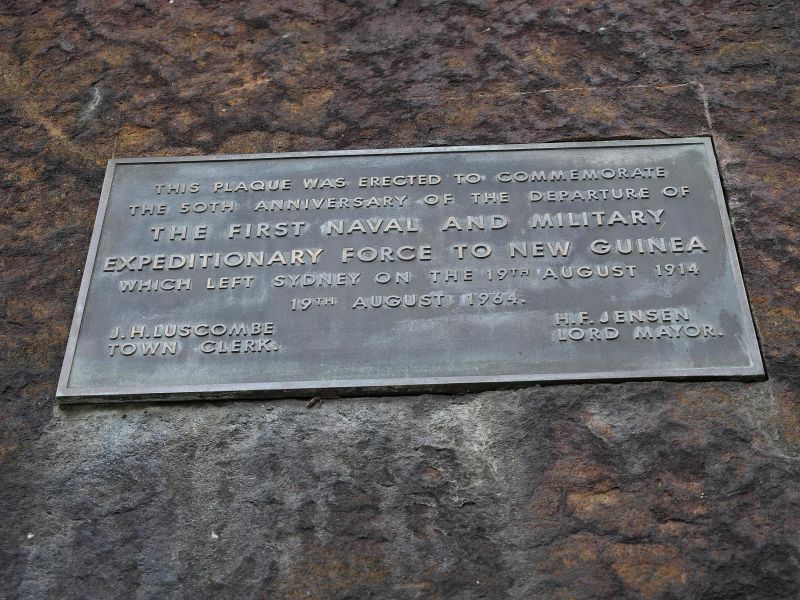First Australian Military Engagement With Enemy Forces in WW1
Michael White has provided the following information for publication.
On 18th August 1914, just two weeks after the Declaration of World War 1 and just seven days days after enlisting, 1100 Officers and men under the command of Colonel William Holmes formed into eight infantry companies, one machine gun section and a group from the Australian Medical Corps, marched from the Agricultural Showgrounds to Fort Macquarie from where they were ferried across to Cockatoo Island. There they were joined by some 500 Naval Reservists recruited from NSW, Queensland, Victoria and South Australia, under the command of Commander Beresford, to become the Australian Naval and Military Expeditionary Force (AN&MEF).
The two groups had never met, and the naval and military officers were strangers to each other. The newly formed Force was loaded aboard the Berrima, a P and O liner that had been chartered by the Australian Government and had been undergoing an extensive refit to convert it to a 'merchant cruiser' carrying four 4.7-inch guns.
Around noon on 19th August the Berrima set sail, under sealed orders, making her way up Sydney Harbour to the Heads, where she turned left, confirming the widely held belief that she was off to the Islands.
After a period of training at Palm Island, off Townsville, she was joined by the Australian flagship, HMAS Australia, other Australian warships, the French cruiser Montcalm and submarines AE1 and AE2, and arrived off Herbertshohe, German New Guinea, on 11th September 1914, where the Force had been tasked with knocking out the German wireless station at Bita Paka. The landing party met with some resistance from the German Military Reservists and local trainees and suffered casualties including AMC Captain Pockley and Lt Cmdr. Ewell. Having secured the wireless station some of the Force remained at Herbertshohe whilst the majority moved into Blanche Bay, landing at Rabaul where the German surrender was accepted, and the Australian Military Administration of German New Guinea commenced. The Australian Administration of German New Guinea which commenced in September 1914 continued until Papua New Guinea Independence in 1975.
The AN&MEF, as well as being the first military operation planned by the Australian Government, was also the first joint operation by the Australian Navy and Army, the first land operation of WW1, the first time Australian forces engaged with the enemy, the first to suffer casualties, the first to record a military victory, the first to occupy enemy territory, and the first to suffer the loss of a Naval ship, the submarine HMAS AE1. This was seven months before Gallipoli.
Having successfully completed their mission, the majority of the members of the AN&MEF returned to Australia in early 1915. Some 1110 subsequently joined the AIF and 153 were killed on Gallipoli and in France and Belgium. 7 were taken prisoner of war and 118 were awarded bravery medals including the MC, MM, MSM, DSO and DSC. A further 12 French and Belgium military honours were awarded, primarily in recognition of their service in New Guinea.
 Patrick Bourke
Patrick Bourke